
Heavy lake effect snow will continue in the Great Lakes into Wednesday before another storm brings a widespread general snow followed by another round of heavy lake effect snow. A wide-ranging winter storm will produce great swaths of heavy snow, sleet, and treacherous freezing rain from the southern Rockies/Plains and Mid-South starting Friday and shifting toward the East Coast through Sunday. Read More >
Overview
A slow moving cold front moved south out of Kansas into the northern Panhandles during the evening of June 18 into the morning of June 19, 2024. The cold front along with upper level dynamics and abundant moisture throughout the atmosphere, combined to form a line of showers and thunderstorms across the northern half of the Panhandles, in particular for the Oklahoma Panhandle. Due to weak flow aloft, the storms moved very slowly and when attached to the cold front, were able to keep moving over the same locations for hours at a time. With moisture near or above the climatological maximum in place over the Panhandles, the stronger thunderstorms were able to produce rainfall rates upwards of 3 to 4 inches per hour at times. With these rain rates and several hours of rainfall occurring at some locations, rainfall totals upwards of 5 to 9 inches were recorded across the north central Texas Panhandle into Texas and Beaver counties of the Oklahoma Panhandle. A majority of this rainfall fell in 1 to 2 hours, which maximized the flash flood potential. This resulted in many roads were closed or completely washed out, high water rescues were performed due to stranded motorists, and many citizens woke up to feet of water outside, and in some cases inside, their homes. Additionally, some of these storms were able to take advantage of the unstable airmass across the Panhandles and produced large hail and damaging winds. Although many hail reports ranged from penny to quarter size, some locations did have hail upwards of 2 to potentially 2.5 inches (tennis ball) across the same areas that received historic levels of flash flooding.Photos & Video
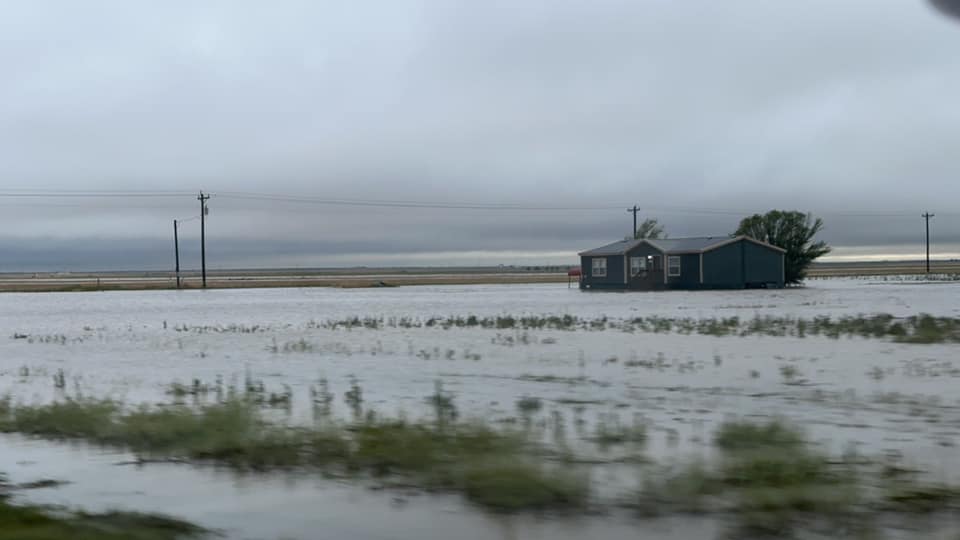 |
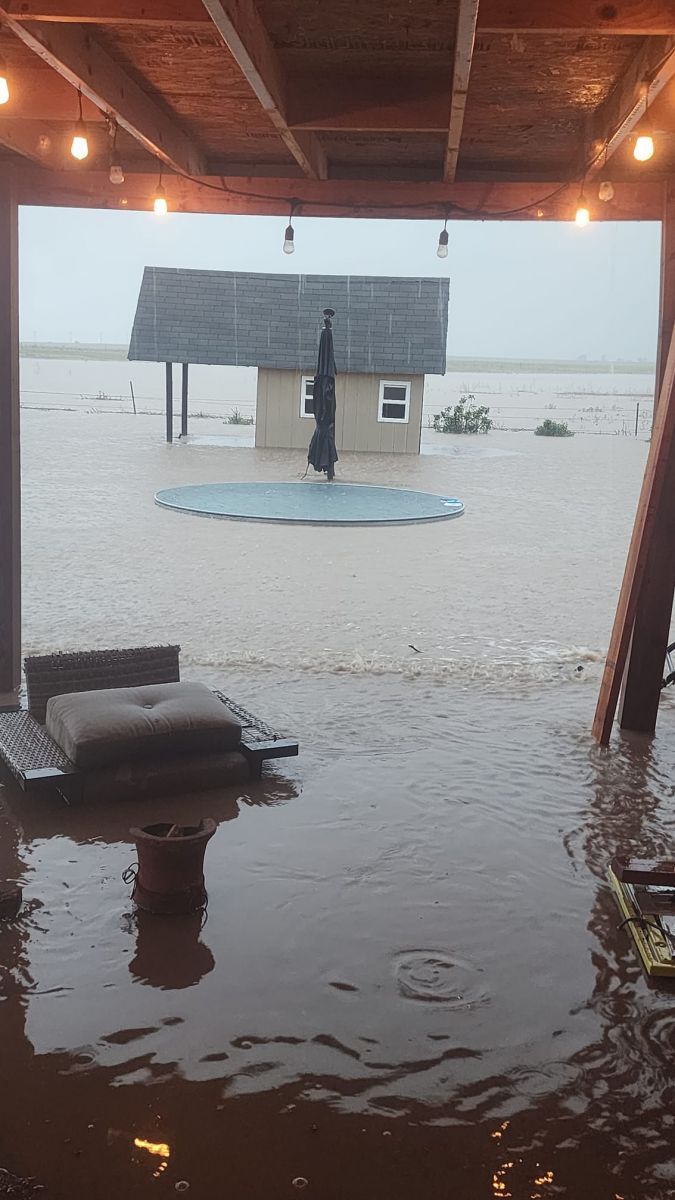 |
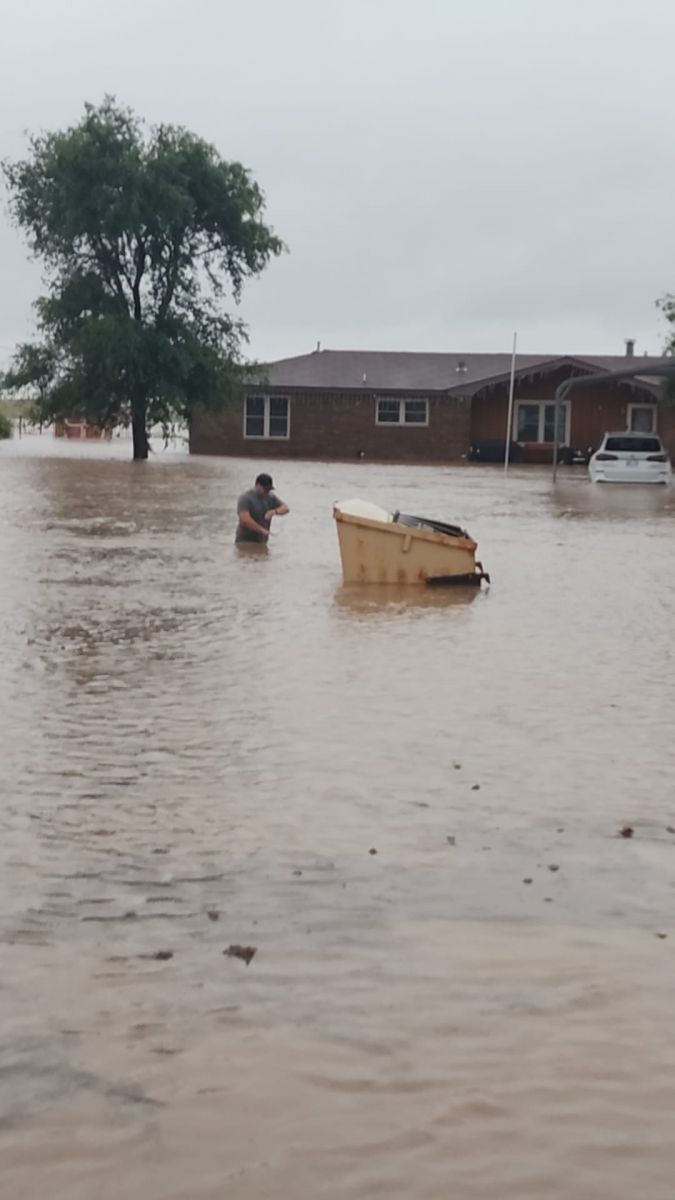 |
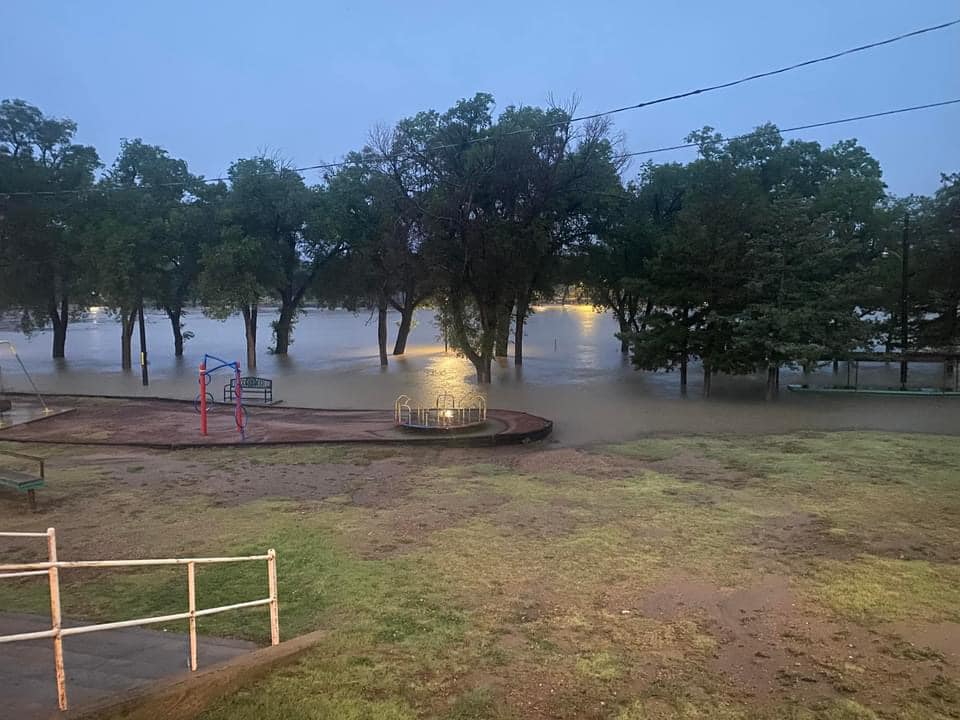 |
| 4.5 mi north of Stratford (Bryson Warren) |
Flooded Yard Goodwell (Tasha Michelle Herrera) |
Flooded Streets Goodwell, OK (Tasha Michelle Herrera) |
Sunset Lake, Guymon, OK (Samantha Rosenda) |
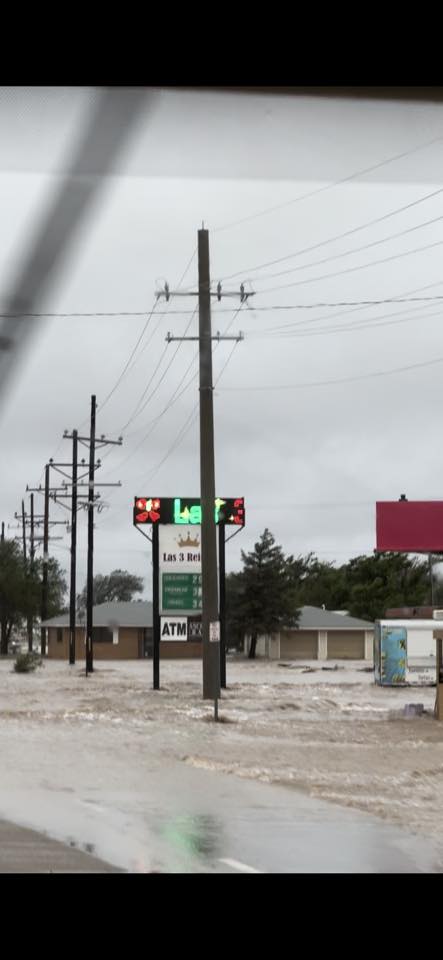 |
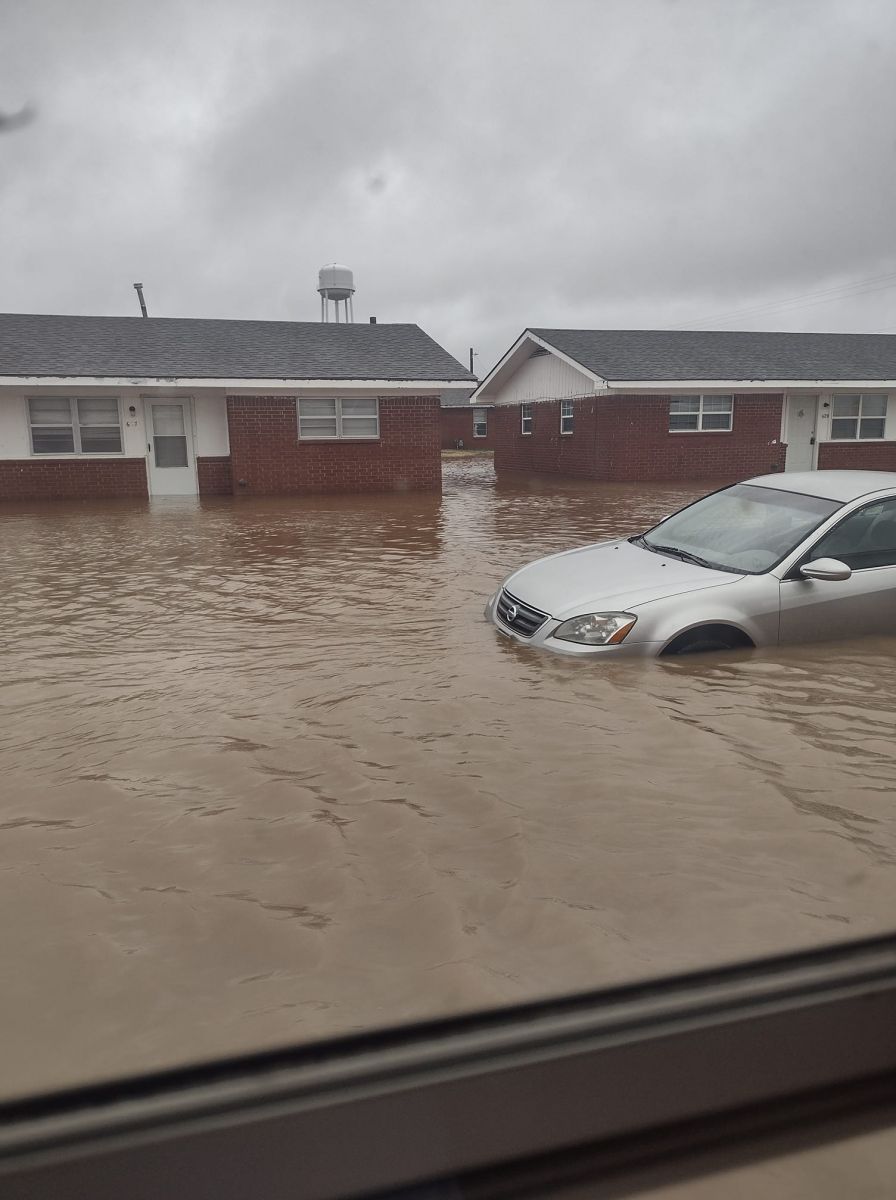 |
 |
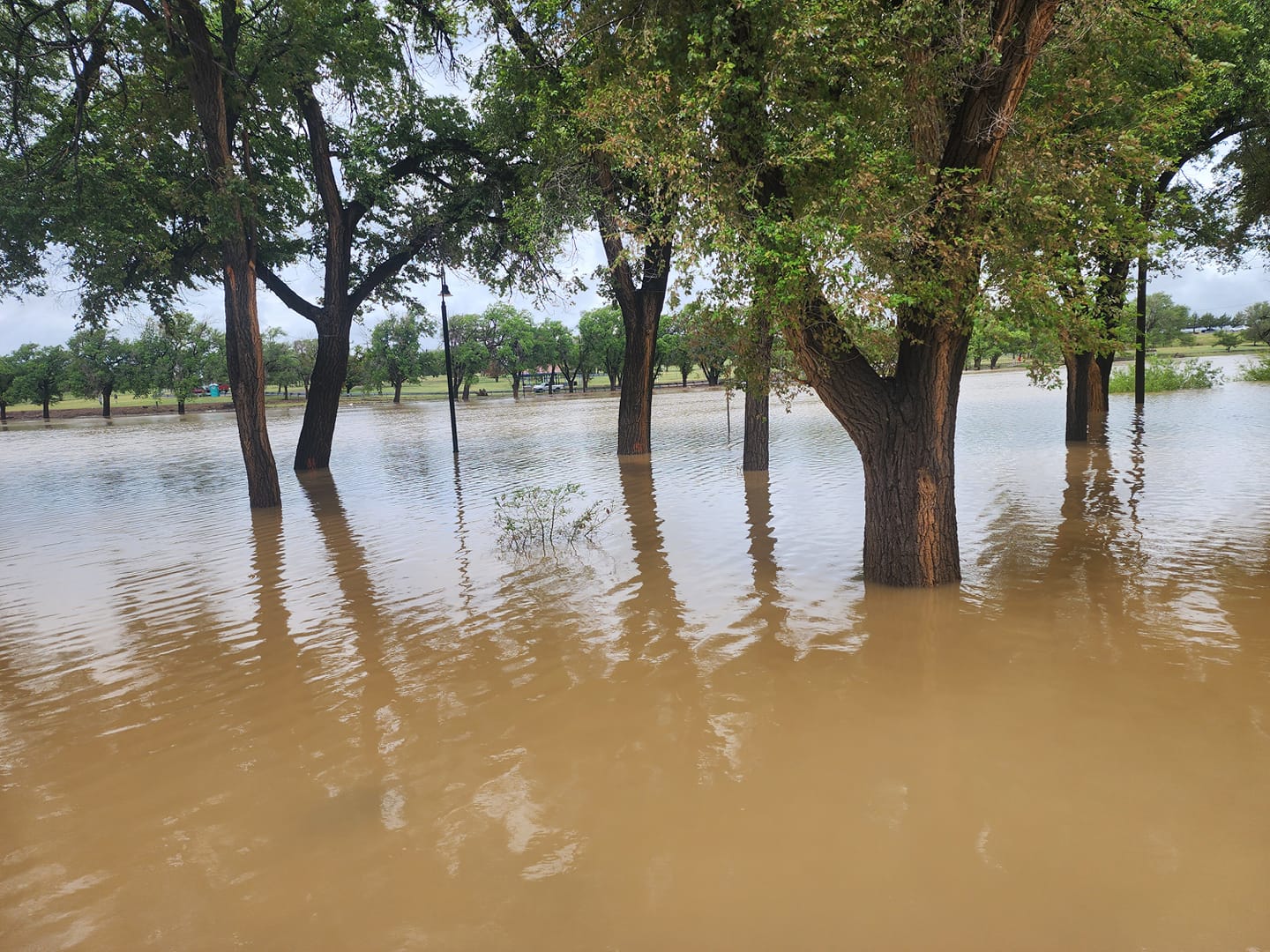 |
| Passing through Goodwell, OK (Jocelyne Gomez) |
Panhandle State University, Goodwell, OK (Jennifer Brdar) |
HWY 54 Outside Goodwell (Jason Strick) | Sunset Lake, Guymon, OK (Dakota Gomez) |
Radar
|
Radar Loop |
Storm Reports
961
NWUS54 KAMA 211047
LSRAMA
Preliminary Local Storm Report...Summary
National Weather Service Amarillo TX
547 AM CDT Fri Jun 21 2024
..TIME... ...EVENT... ...CITY LOCATION... ...LAT.LON...
..DATE... ....MAG.... ..COUNTY LOCATION..ST.. ...SOURCE....
..REMARKS..
0930 PM Tstm Wnd Gst 1 WSW Hooker 36.86N 101.23W
06/18/2024 M58 MPH Texas OK Mesonet
0940 PM Tstm Wnd Gst 1 SSW Beaver 36.80N 100.53W
06/18/2024 M62 MPH Beaver OK Mesonet
1003 PM Tstm Wnd Dmg 3 E Baker 36.86N 100.96W
06/18/2024 Texas OK Public
Pictures of power poles snapped along US HWY
- 64 13 miles east of Hooker received via
social media. Time estimated via radar.
1020 PM Hail 5 E Optima 36.76N 101.26W
06/18/2024 E1.00 Inch Texas OK Emergency Mngr
Mostly nickel size hail with a few quarters
mixed in.
1021 PM Flash Flood Hooker 36.86N 101.21W
06/18/2024 Texas OK Emergency Mngr
Home washed away due to flood waters.
1021 PM Flash Flood Hooker 36.86N 101.21W
06/18/2024 Texas OK NWS Employee
1 foot of water over the roadway at the
intersection of Illinois St and Ireland St.
Water is higher than the bottom of a SUV.
1105 PM Flash Flood Beaver 36.81N 100.52W
06/18/2024 Beaver OK Public
Fast flowing water covering roads in Beaver,
OK. Video received via social media.
1109 PM Hail Hardesty 36.61N 101.19W
06/18/2024 M1.00 Inch Texas OK Public
Estimated 1 inch hail report in Hardesty
received via social media. Time estimated
based on radar.
1128 PM Hail 4 SW Guymon 36.65N 101.53W
06/18/2024 E0.75 Inch Texas OK Public
Report from mPING: Dime (0.75 in.).
1135 PM Tstm Wnd Gst 2 ENE Goodwell 36.60N 101.60W
06/18/2024 M61 MPH Texas OK Mesonet
Corrects previous thunderstorm wind gust
report from 2 ENE Goodwell. 61 mph maximum
wind gust measured from Goodwell mesonet.
Storms still ongoing.
1151 PM Hail 1 SW Texhoma 36.50N 101.79W
06/18/2024 E1.00 Inch Sherman TX NWS Employee
Report of at least estimated quarter sized
hail from NWS Employee received via Slack.
1157 PM Hail 4 SW Texhoma 36.46N 101.86W
06/18/2024 M1.00 Inch Sherman TX NWS Employee
Corrects previous hail report from 4 SW
Texhoma. Estimated 1 inch hail report along
US HWY 54. From NWS Employee received via
Slack.
1200 AM Hail Texhoma 36.51N 101.79W
06/19/2024 M2.00 Inch Texas OK Public
Picture of 2 inch diameter hail next to a
ruler received via social media.
1242 AM Hail 4 NW Stratford 36.39N 102.13W
06/19/2024 M1.25 Inch Sherman TX Public
Public Mping report of half dollar size hail
along 287 NW of Stratford near Mallett.
0100 AM Hail 5 SW Goodwell 36.55N 101.70W
06/19/2024 E2.50 Inch Texas OK Emergency Mngr
Emergency manager relayed report via Slack.
Dispatchers report large near baseball size
hail on Highway 54 between Goodwell and
Texhoma. Said it stopped before Goodwell.
Said enough to cover roadway and she had
major cracks in windshield.
0207 AM Flash Flood Beaver 36.81N 100.52W
06/19/2024 Beaver OK Emergency Mngr
Local EM reports areas of flooding in and
around Beaver, OK. Multiple lane and road
closures ongoing in the area due to
flooding, especially HWY 23. Bar ditches
overflowing onto roadways.
0751 AM Flash Flood 5 NE Goodwell 36.65N 101.56W
06/19/2024 Texas OK Emergency Mngr
Picture shared on Facebook of a road washed
out.
0751 AM Flash Flood 2 NW Guymon 36.70N 101.50W
06/19/2024 Texas OK Emergency Mngr
Picture shared on Facebook. Road completely
covered with water and power poles laying
across it.
0751 AM Flash Flood 2 NNW Guymon 36.72N 101.49W
06/19/2024 Texas OK Emergency Mngr
Corrects previous flash flood report from 2
NNW Guymon. Picture sent through Facebook.
Road completely covered by water. This water
extend fully into the N side of town with
widespread flooding still present at 4:30pm.
0800 AM Flash Flood Guymon 36.69N 101.48W
06/19/2024 Texas OK Emergency Mngr
30 total high water rescues across Texas
County.
0919 AM Flash Flood Goodwell 36.59N 101.63W
06/19/2024 Texas OK Public
Picture shared on Facebook of a flooded back
yard. Water appears to be 2 to 3 feet deep.
0919 AM Flash Flood Goodwell 36.60N 101.63W
06/19/2024 Texas OK Emergency Mngr
All homes in Goodwell are flooded.
0945 AM Rain 1 SW Guymon 36.67N 101.49W
06/19/2024 M8.79 Inch Texas OK Public
8.79 inches of rainfall measured by public
at golf course club house.
1200 PM Flood 4 N Stratford 36.40N 102.06W
06/19/2024 Sherman TX Public
Flooded property with water up to porch
still present at noon.
0330 PM Flood 1 NNE Baker 36.88N 101.02W
06/19/2024 Texas OK Public
Flood water covering the roads at
intersection and flooding surrounding
fields.
0345 PM Flood Goodwell 36.59N 101.64W
06/19/2024 Texas OK Public
Flood waters still present at 3:45pm, water
inside apartment that is 1 inch deep, water
in the road up to the top of front car
tires.
1100 PM Flood 1 NW Hooker 36.87N 101.22W
06/19/2024 Texas OK CO-OP Observer
7.90 inches of rain fell between 9 am and 11
pm. Many homes flooded.
&&
$$
Rain Totals
|
|
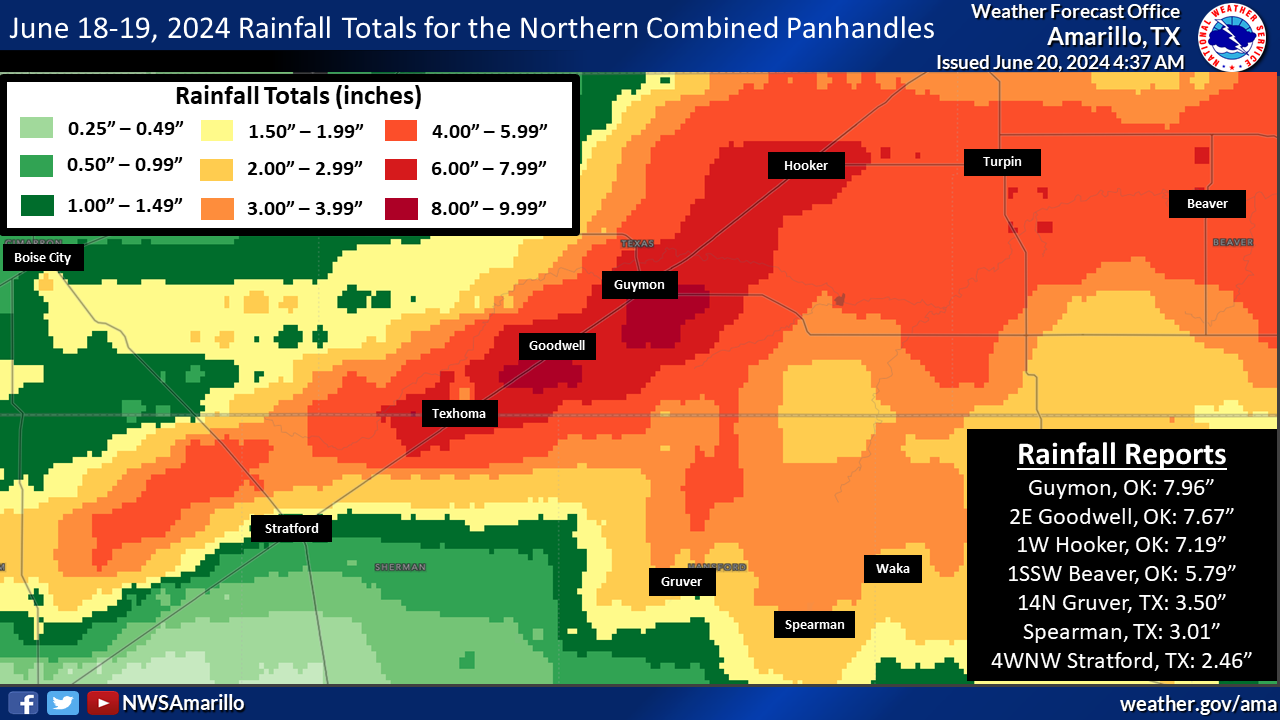 |
| North Central Combined Panhandles |
 |
Media use of NWS Web News Stories is encouraged! Please acknowledge the NWS as the source of any news information accessed from this site. |
 |